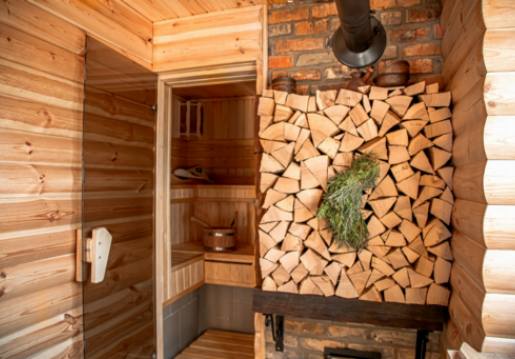Safe Use Guidelines for Sauna Users
22 February 2025 by Diane T.Saunas can be a relaxing and rejuvenating experience, but it's important to prioritize safety when using them. From preventing fire hazards to monitoring carbon monoxide levels, there are several guidelines that sauna users should follow to ensure a safe and enjoyable experience. Proper temperature regulation in wood-burning saunas and staying hydrated are also key factors to consider. By being aware of these safety precautions, sauna users can fully enjoy the benefits of this popular home and garden feature.

Preventing Fire Hazards in Sauna Use
Saunas are a popular way to relax and unwind, but it is important to take precautions to prevent fire hazards while using them. To ensure the safety of yourself and others, here are some tips to prevent fire hazards in sauna use:Keep flammable materials away from the sauna: It is important to keep any flammable materials, such as towels, clothing, or cleaning supplies, away from the sauna heater. These materials can easily catch fire if they come into contact with the hot surfaces of the sauna.
Regularly inspect the sauna heater: Before each use, make sure to inspect the sauna heater for any signs of damage or wear. If you notice any issues, such as frayed wires or loose connections, do not use the sauna until the heater has been repaired or replaced.
Practice proper sauna etiquette: When using the sauna, be mindful of your actions and avoid doing anything that could increase the risk of fire, such as smoking or using candles. Additionally, make sure to follow the manufacturer's instructions for proper sauna use to minimize the risk of fire hazards.
Install a smoke detector: It is important to have a smoke detector installed near the sauna to alert you in case of a fire. Make sure to test the smoke detector regularly to ensure it is functioning properly. By following these guidelines, you can enjoy the benefits of a sauna while minimizing the risk of fire hazards. Remember, safety should always be your top priority when using a sauna.
Monitoring Carbon Monoxide Levels in Saunas
It is important to monitor carbon monoxide levels in saunas to prevent the risk of carbon monoxide poisoning. One way to monitor carbon monoxide levels is to install a carbon monoxide detector in the sauna. This device will alert users if unsafe levels of carbon monoxide are present in the air. It is important to regularly test and maintain the detector to ensure it is functioning properly. Additionally, ensure that the sauna is properly ventilated to allow for the escape of any carbon monoxide that may be produced during sauna use. This can be done by installing vents or windows that can be opened to allow fresh air in and carbon monoxide out. If anyone in the sauna starts to experience symptoms of carbon monoxide poisoning, such as headaches, dizziness, nausea, or confusion, they should immediately leave the sauna and seek fresh air. It is important to take these symptoms seriously, as carbon monoxide poisoning can be life-threatening. By monitoring carbon monoxide levels in saunas and taking steps to prevent its buildup, sauna users can enjoy a safe and relaxing experience without the risk of carbon monoxide poisoning.Safe Temperature Regulation in Wood-Burning Saunas
One key tip for safe temperature regulation in wood-burning saunas is to start the fire slowly and allow the sauna to heat up gradually. This will help prevent the sauna from getting too hot too quickly, which can be dangerous. It is also important to monitor the temperature regularly while using a wood-burning sauna. A sauna thermometer can help you keep track of the temperature inside the sauna and make adjustments as needed to maintain a safe and comfortable level of heat. Additionally, it is crucial to properly ventilate the sauna to prevent the build-up of excessive heat. This can be done by opening a vent or window to allow fresh air to circulate inside the sauna. By following these guidelines for safe temperature regulation in wood-burning saunas, sauna users can enjoy a relaxing and rejuvenating sauna experience without putting their safety at risk.Hydration Tips for Sauna Users
Here are some tips to help you maintain proper hydration levels while enjoying a sauna session:Drink plenty of water before entering the sauna. It is recommended to drink at least two to four glasses of water before using a sauna to help prepare your body for the heat.
Bring a water bottle with you into the sauna and take regular sips throughout your session. Avoid drinking large amounts of water at once, as this can lead to discomfort or nausea.
Avoid alcohol and caffeine before using a sauna, as these substances can dehydrate your body and increase the risk of heat-related illnesses.
After your sauna session, continue to drink water to replenish any fluids lost through sweating. Coconut water or electrolyte drinks can also help restore lost minerals and prevent dehydration.
Listen to your body and pay attention to signs of dehydration, such as increased thirst, dry mouth, dark yellow urine, or dizziness. If you experience any of these symptoms, stop your sauna session and drink water immediately. By following these hydration tips, you can stay safe and enjoy the benefits of using a sauna while keeping your body properly hydrated.